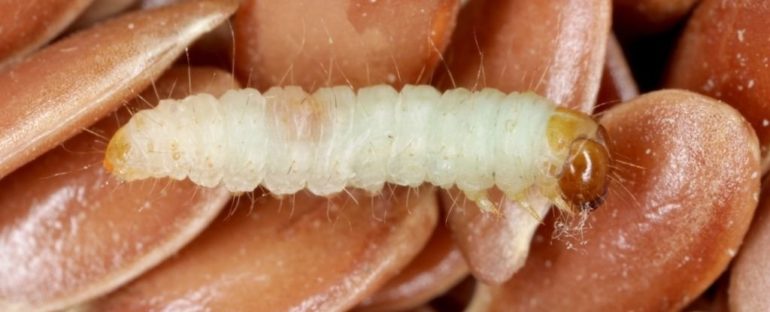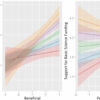Scientists have figured out a way to stop cannibalistic moths from selfishly eating their siblings. All that’s required is the space to get to know one another.
The Indian meal moth, or the pantry moth (Plodia interpunctella), is usually a voracious vegetarian, chowing down on flours, cereals, rice, and other packaged foods as a young caterpillar. However, if there’s not enough nutrition around, or if there are too many moths in the brood, these larvae can sometimes turn on one another, feasting on both strangers and relatives alike.
That’s some brutal survival behavior, but new research suggests this moth-eat-moth mentality is not inherent to the species. Under friendlier conditions, these insects can be quite neighborly.
When researchers directly manipulated the spacing of five moth populations, they found more cramped conditions led to far less cannibalism in just ten generations.
“Families that were highly cannibalistic just didn’t do as well in that system,” says biologist Volker Rudolf from Rice University.
“Families that were less cannibalistic had much less mortality and produced more offspring.”
The findings support a previously untested theory behind the evolution of social behavior. A team of researchers – including Rudolf and the moth study’s first author, Mike Boots, a biologist at the University of California, Berkeley – suggested that when animals interact more, the rate of cannibalism decreases. That’s because the chance of encountering and eating your kin is statistically more likely in a denser cluster, and in the end, that would be disadvantageous.
In short, the closer a family unit, the less likely they are to kill one another.
The new microevolutionary experiment puts this theory to the test.
In the early stages of this particular moth’s life, caterpillars live and grow in their food, so the authors decided to limit the larvae’s ability to disperse by creating five different food viscosities of equal nutrition. Practically, this meant that some conditions were easier for caterpillars to move about in, while other environments were stickier and led to less movement and more interactions between individuals.

Above: The sealed enclosures where meal moths were raised either included sticky food (top) or food that was easier to move through (bottom).
After 10 generations, researchers compared the rate of cannibalism in each group. In cases where dispersal was limited by stickiness, the extreme selfish behavior of cannibalism significantly decreased over time.
“Because they’re laying eggs in clusters, they’re more likely to stay in these little family groups in the stickier foods that limit how fast they can move,” says Rudolf.
“It forced more local interactions, which, in our system, meant more interactions with siblings. That’s really what we think was driving this change in cannibalism.”
In this scenario, it seems the cost of cannibalism outweighs the benefits. Eating another moth might decrease competition and provide nourishment, but in cramped quarters it’s more likely that a caterpillar will eat its sibling. Devouring kin can undermine the continuation of their shared genes if it happens enough.
Over time, those moths with more cooperative impulses were the ones that survived in a stickier substance.
Whether this finding holds for other species remains to be seen, but the authors say their results imply a “considerable potential” for nature to select against selfish behavior.
Natural selection is often described as an intrinsically selfish force, but this doesn’t necessarily mean there aren’t benefits to cooperative behaviors under certain conditions. Some signs of this have already been seen in yeast and bacteria when their spatial structure is changed. There is also some evidence parasites are less virulent to their hosts when dispersal opportunities are limited.
A similar situation could even occur between humans.
“In societies or cultures that live in big family groups among close relatives, for example, you might expect to see less selfish behavior, on average, than in societies or cultures where people are more isolated from their families and more likely to be surrounded by strangers because they have to move often for jobs or other reasons,” explains Rudolf.
For decades, evolutionary biologists have been fascinated by selfless behavior and how it arises in the animal kingdom. Extreme forms of selfish behavior, however, have been relatively overlooked.
Rudolf has spent decades trying to change that, and his new research on moths just goes to show how important cannibalism can be in the dynamic evolution of animals and their interactions and behaviors.
It’s worth finding out more.
The study was published in Ecology Letters.



